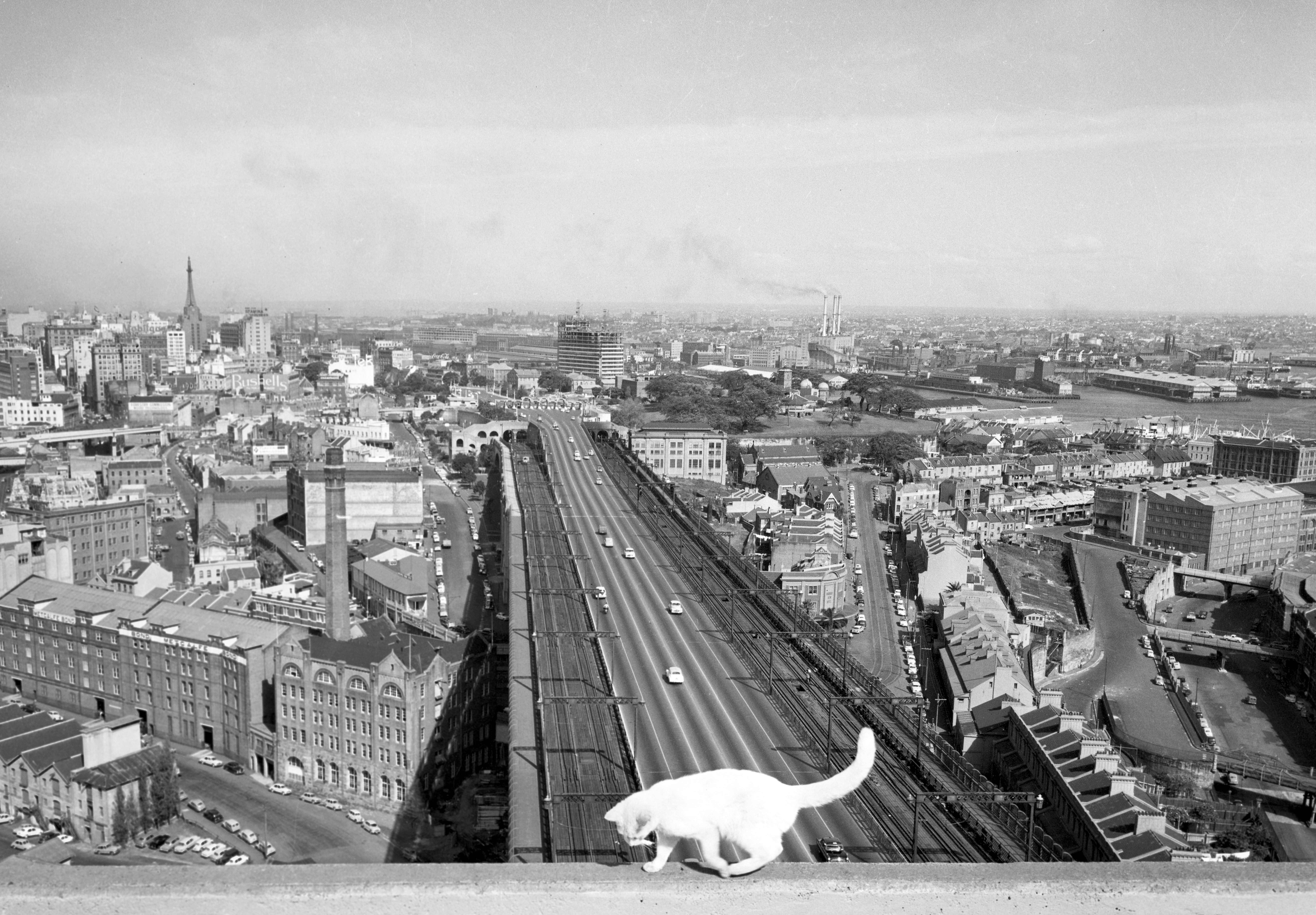90 years young: “The Coathanger” is open

In March 1932, after decades of planning and seven years of construction, the Sydney Harbour Bridge finally opened, physically linking the two sides of the city. This engineering marvel remains the tallest steel arch bridge in the world.
During its building and in the nine decades since its opening, the steel-and-granite structure has had many con- nections with the animal world and today is even something of an urban habitat. Environmental impact statements were thin on the ground in the early 20th century, so it’s hard to know exactly what effects the construction had on the non-human residents of Dawes and Milsons points, the shoreline locales at its ends, but inevitably they were large.
The bridge replaced the old vehicle ferry that plied its trade across the harbour between the same two points and relied on horsepower to assist the disembarking of cars and trucks. Horses were also employed in the bridge’s construction for land clearing and to transport granite from a quarry at Moruya, more than 300km to the south.
Many of the floats and displays in the opening ceremony on 19 March 1932 included horses and ponies. Best remembered are probably Ginger Mick, the chestnut pony ridden by nine-year-old Lennie Gwythe all the way from Gippsland in Victoria, and the borrowed steed of Captain Francis de Groot, also named Mick, from which he infamously cut the ceremonial opening ribbon prematurely with his sword.
Initial bridge tolls were sixpence for a car but also included fees for animals – a mere threepence per horse with rider, twopence for each unridden horse and cow, and a penny per head for sheep and pigs. These categories were challenged in the first weeks by seven elephants from Wirth’s Circus crossing the bridge as a publicity stunt. The toll collector had to call for a second expert opin- ion before determining that they too would be charged twopence each. (The swamp wallaby that crossed the bridge in 2018 didn’t incur a charge.)
In the 1950s and ’60s, returned servicewoman Mrs Yvonne Rentoul managed a tearoom and souvenir shop at the observation deck in the south-east pylon. She also cared for up to 60 cats that lived at night in a rooftop cattery on the pylon but wandered the bridge during the day. Visitors could even buy a kitten.
Dogs were not always so fortunate. An article in 1935 in The Daily Telegraph told the sad story of a small brown mutt that had lost its way on the bridge and fallen despite attempts to save it. Interestingly, the article reports the chief toll inspector saying that dogs were often bewildered by the bridge. “Most of them make for the roadway and then get puzzled by the railings on either side,” he was quoted. “They start running round in circles, but never appear to have the sense to turn back.”

It’s birds that have the strongest natural bonds with the bridge. During the official opening ceremony, 2000 homing pigeons were released bearing messages to all parts of the Commonwealth. But native birds adapted quickly to the structure and could soon be found roosting in nooks and crannies. In 1947 a 10-year-old boy hunting for birds’ eggs climbed up into the girders and was seriously injured but survived when he fell 12m to the deck below.
BridgeClimb Sydney lists several native avian species that can be spotted regularly by climbers, including, of course, Sydney’s ubiquitous sulphur-crested cockatoos, rainbow lorikeets and galahs, as well as yellow-faced honeyeaters and peregrine falcons. The bridge is also home to Australian ravens and in 2013 the company named one nesting pair Russell and Sheryl Crow.
Silver gulls, as well as microbats, swoop above the bridge at night feasting on insects drawn to the lights, including vast waves of bogong moths during their annual migrations.
Directly beneath the bridge, marine life has been supported by the building of living seawalls, artificial panels that help counter changes introduced to the natural shoreline by construction. The 12m panel installed in 2018 has already been colonised by more than 90 species.
So, “Happy 90th Birthday, Sydney Harbour Bridge!”, not only a landmark of modern Australian construction but increasingly a haven for creatures great and small.





